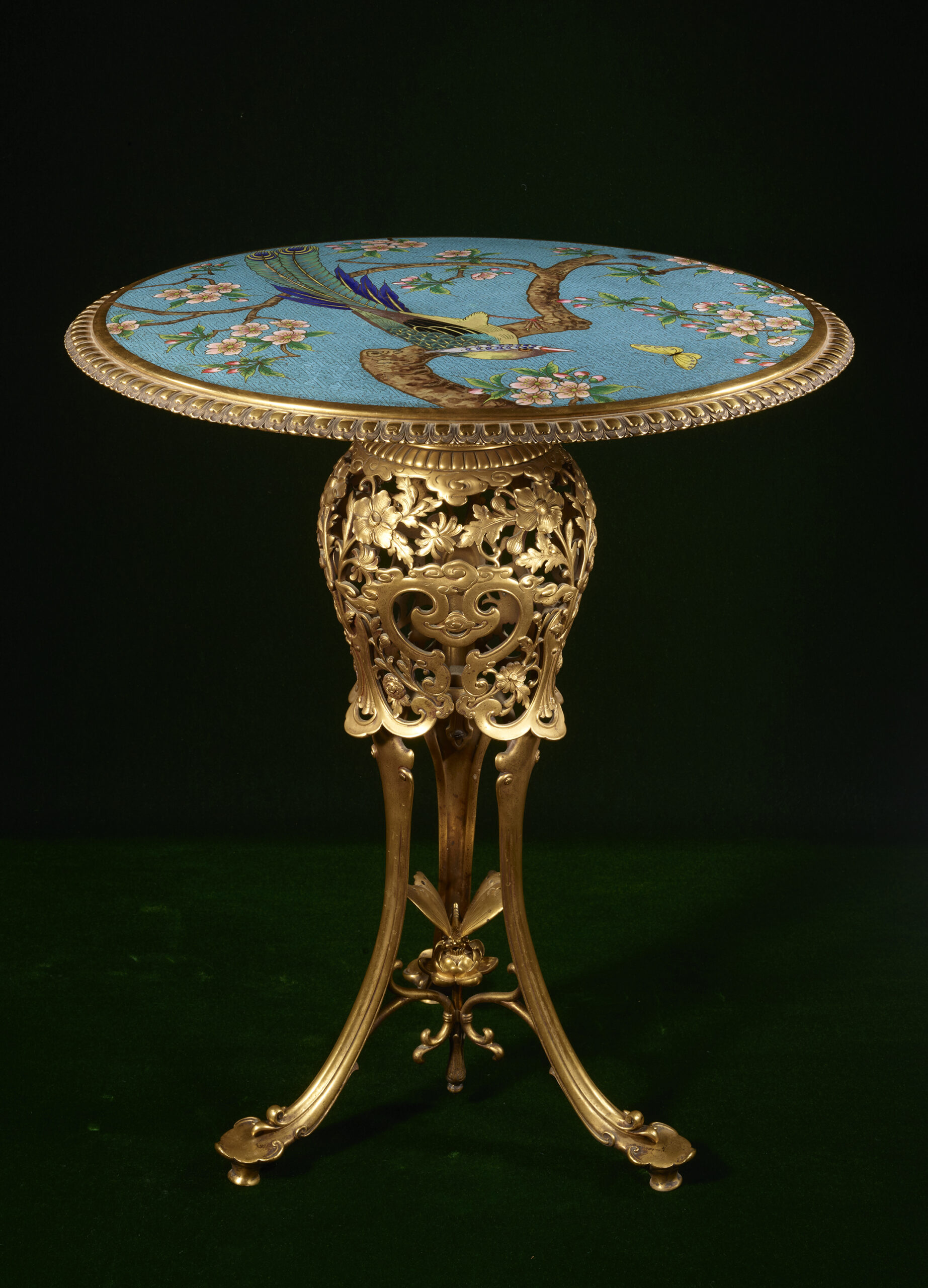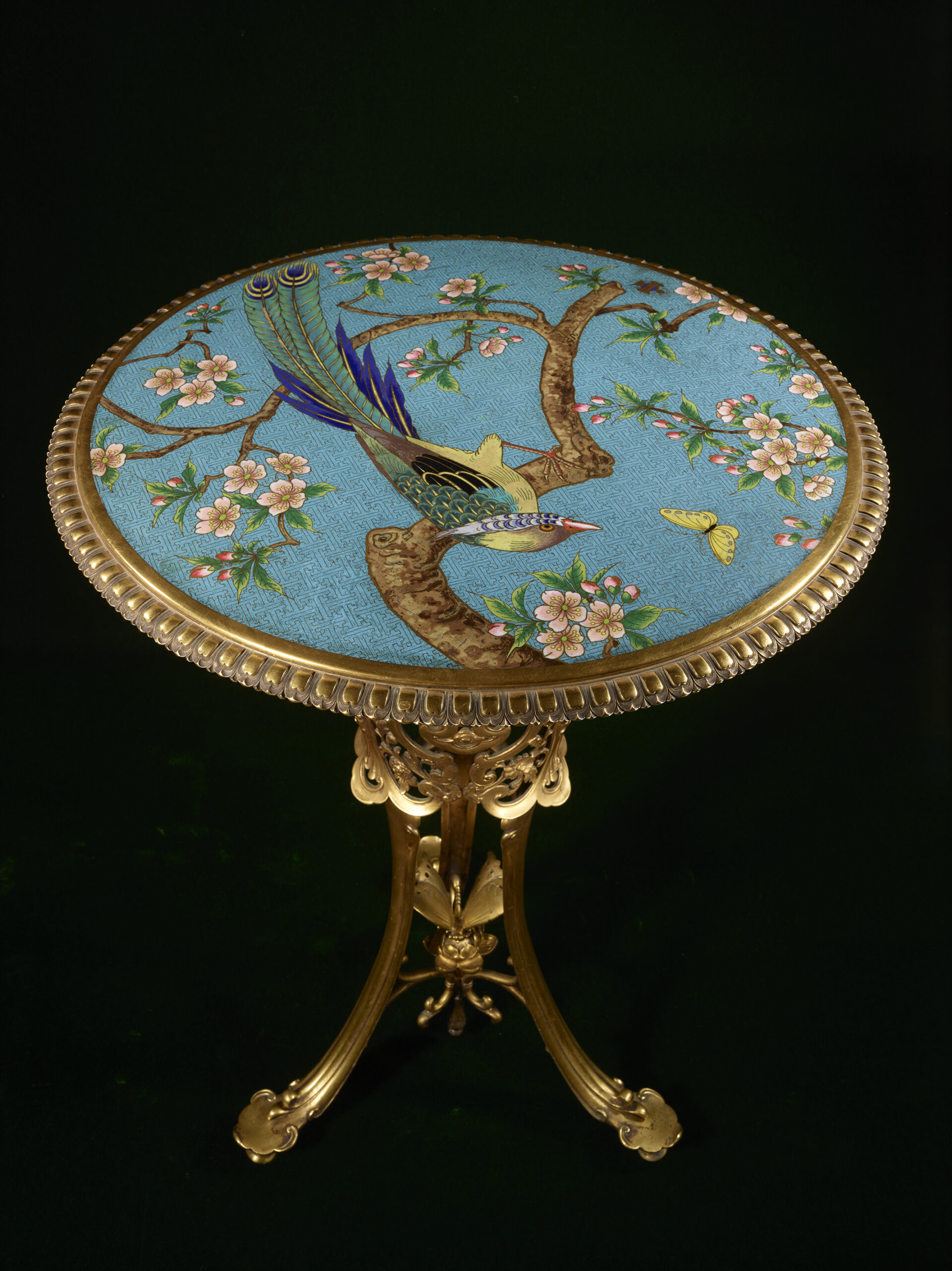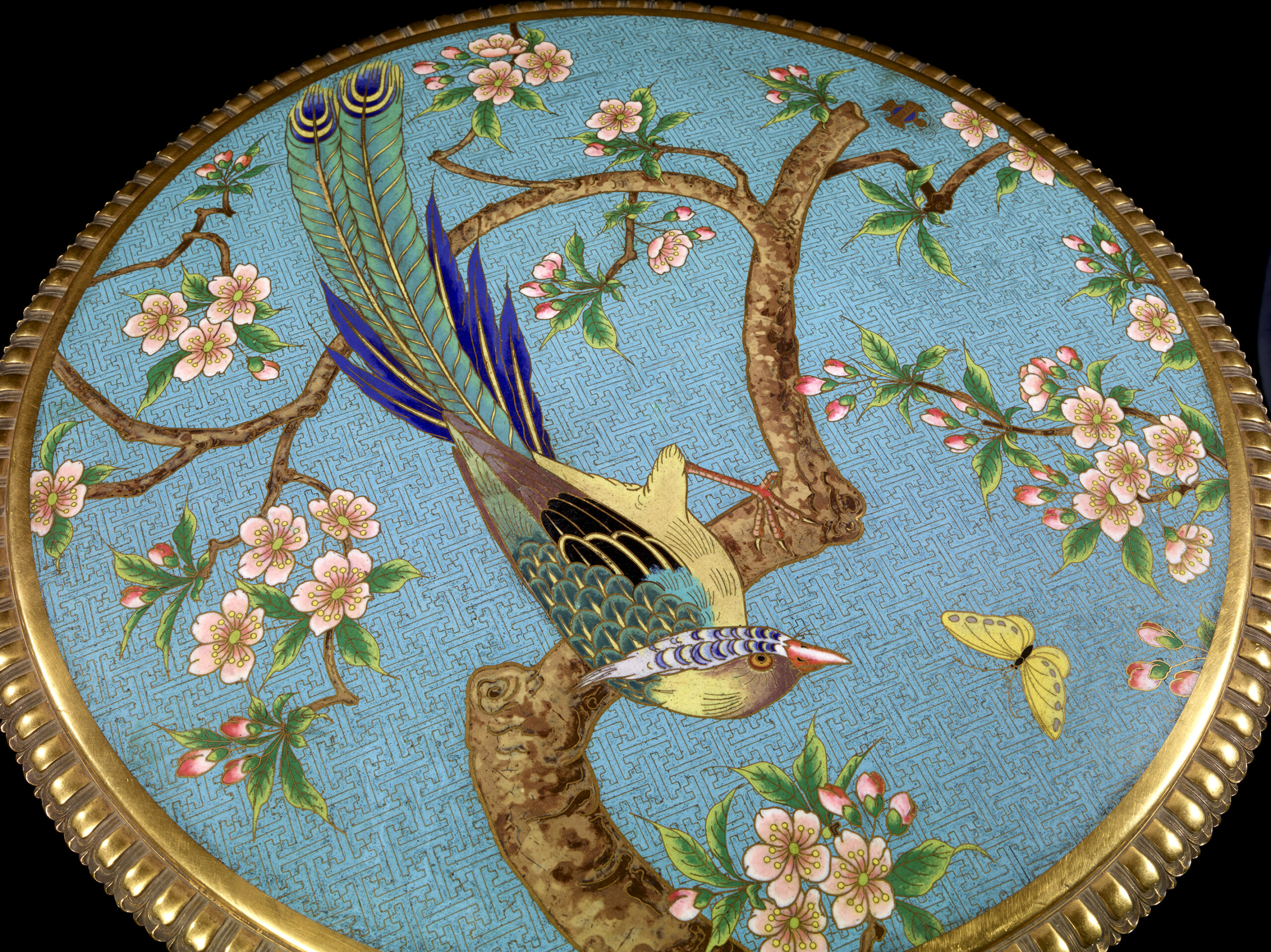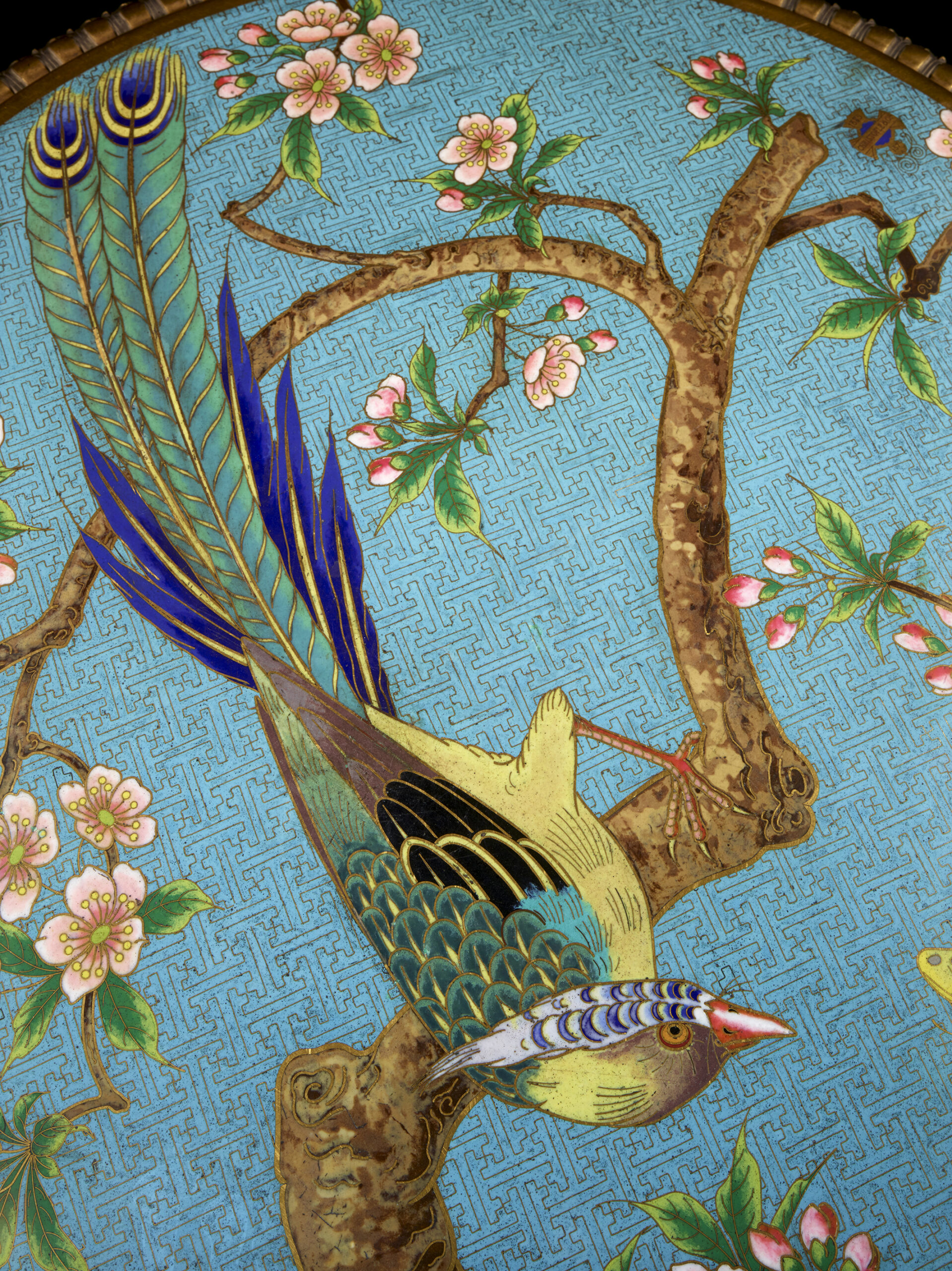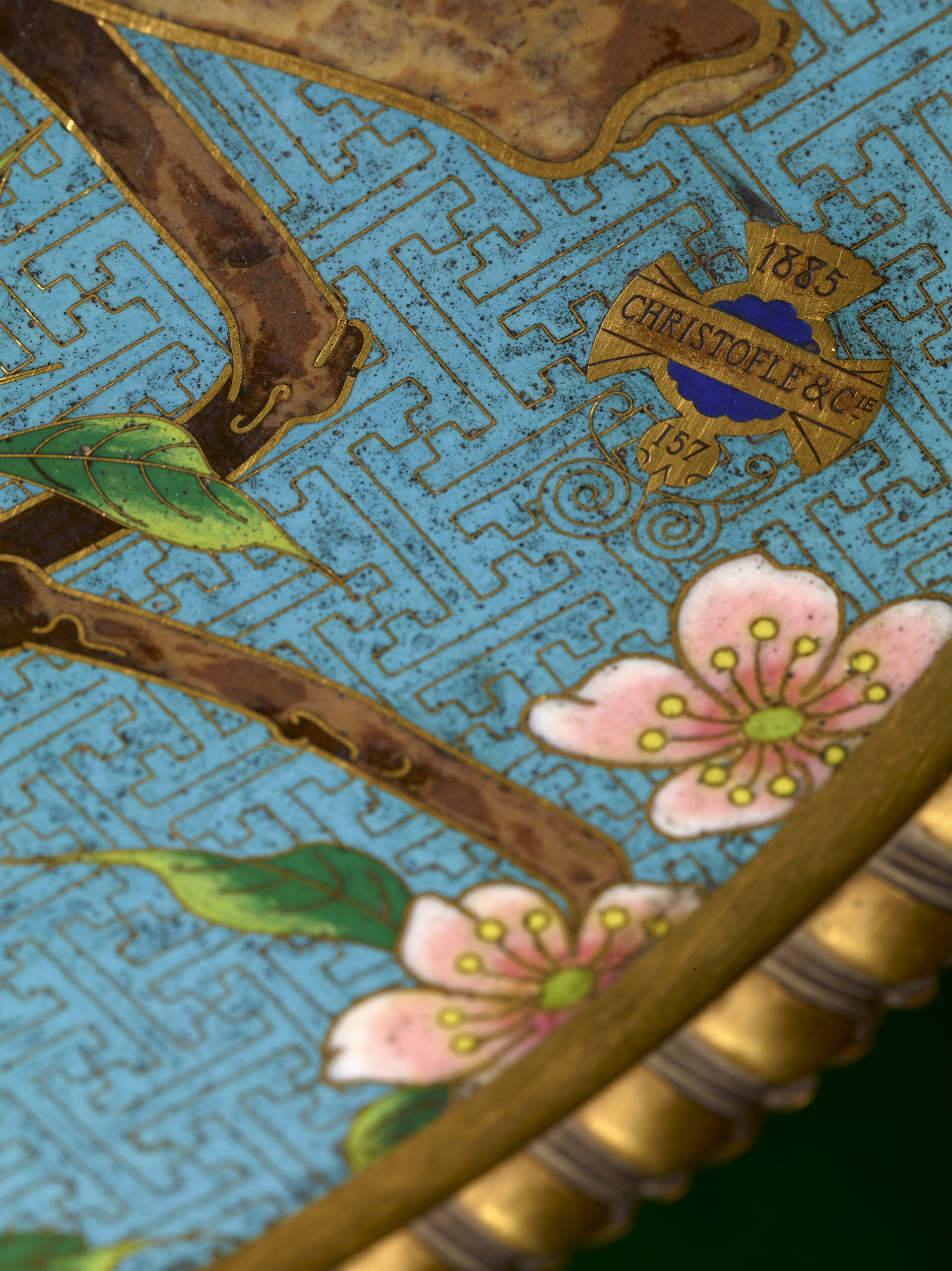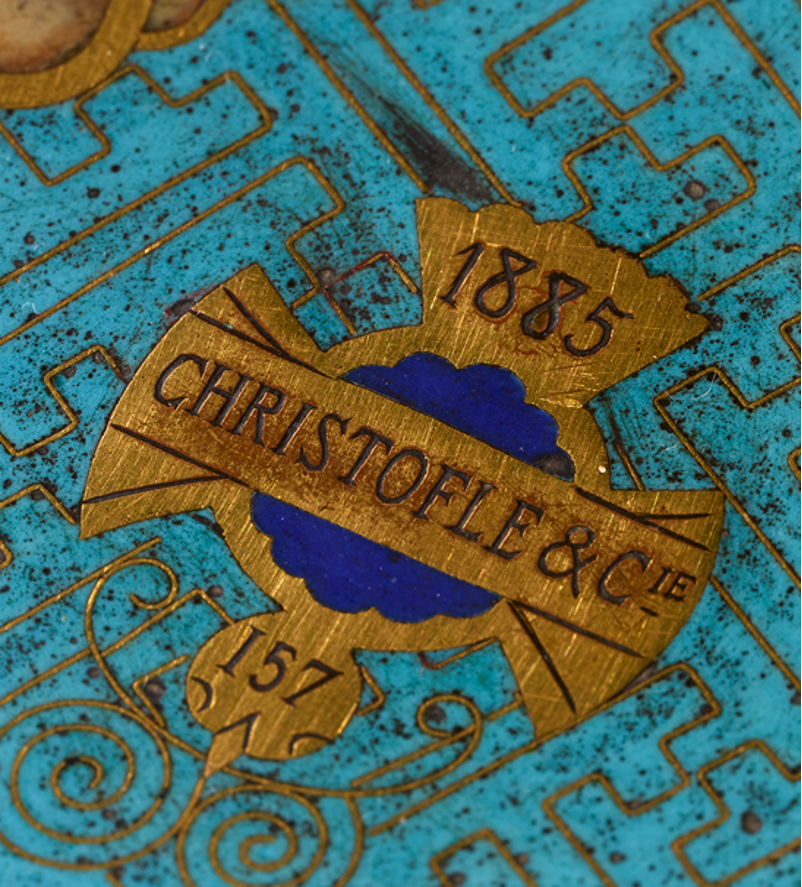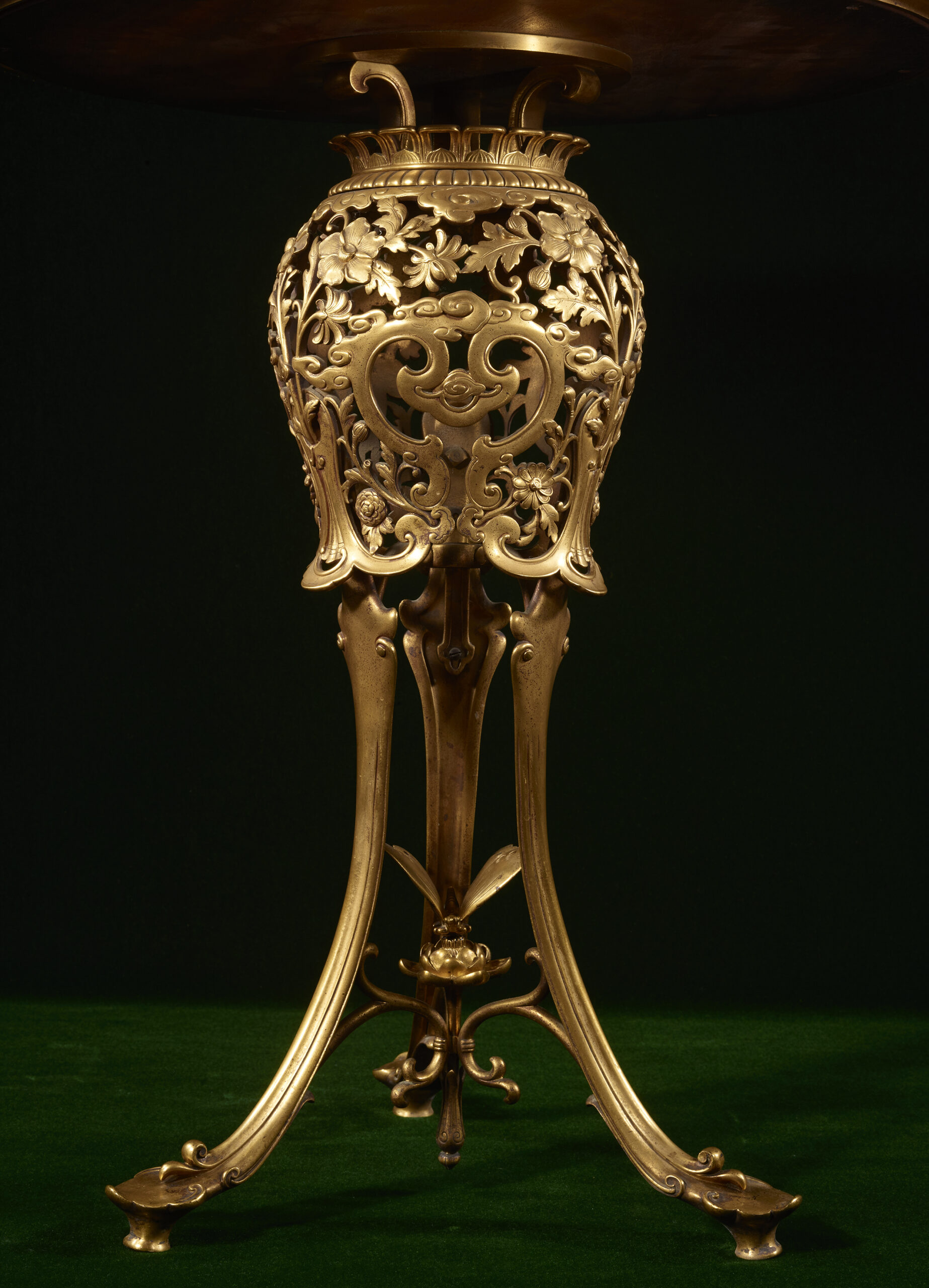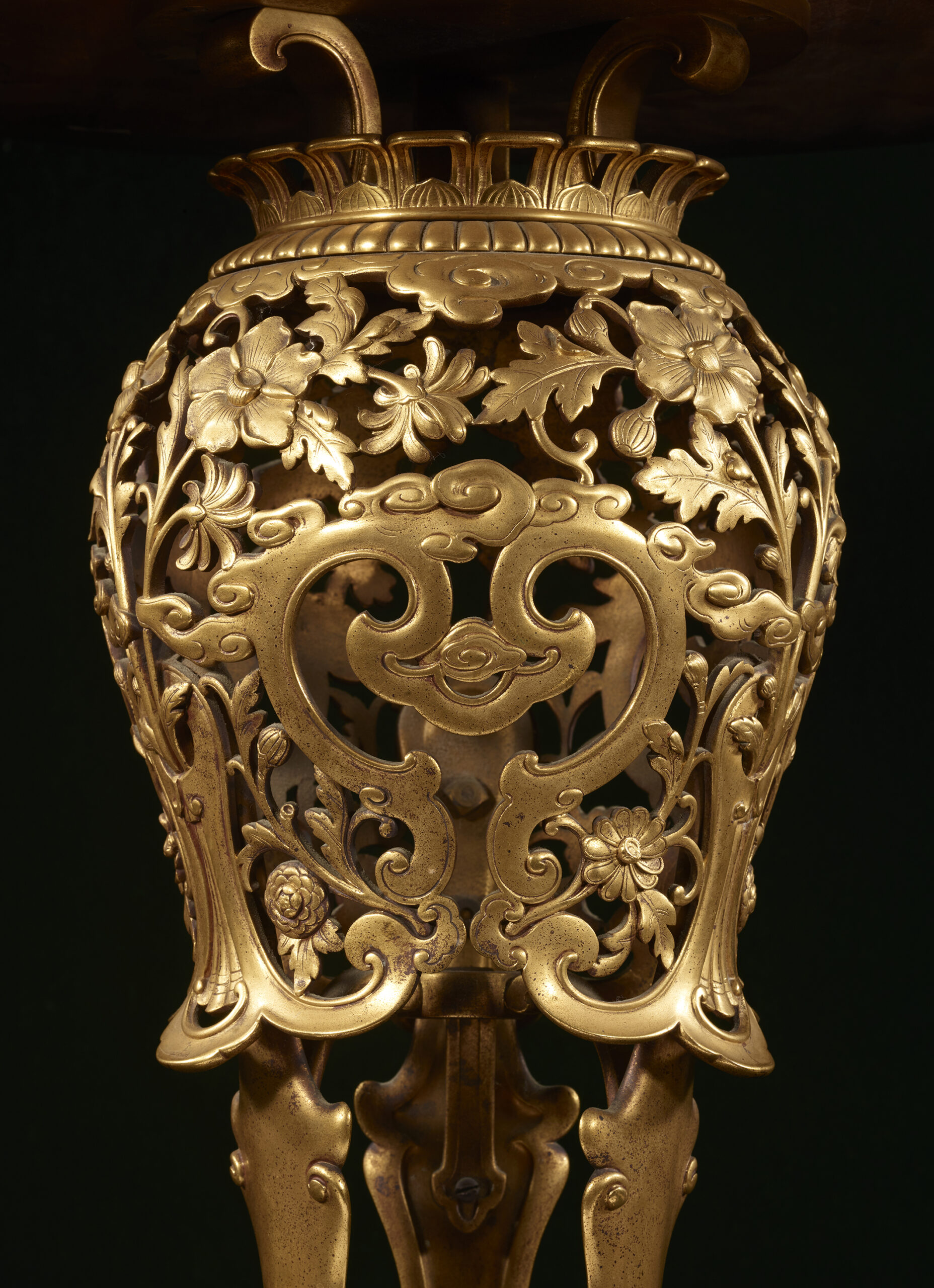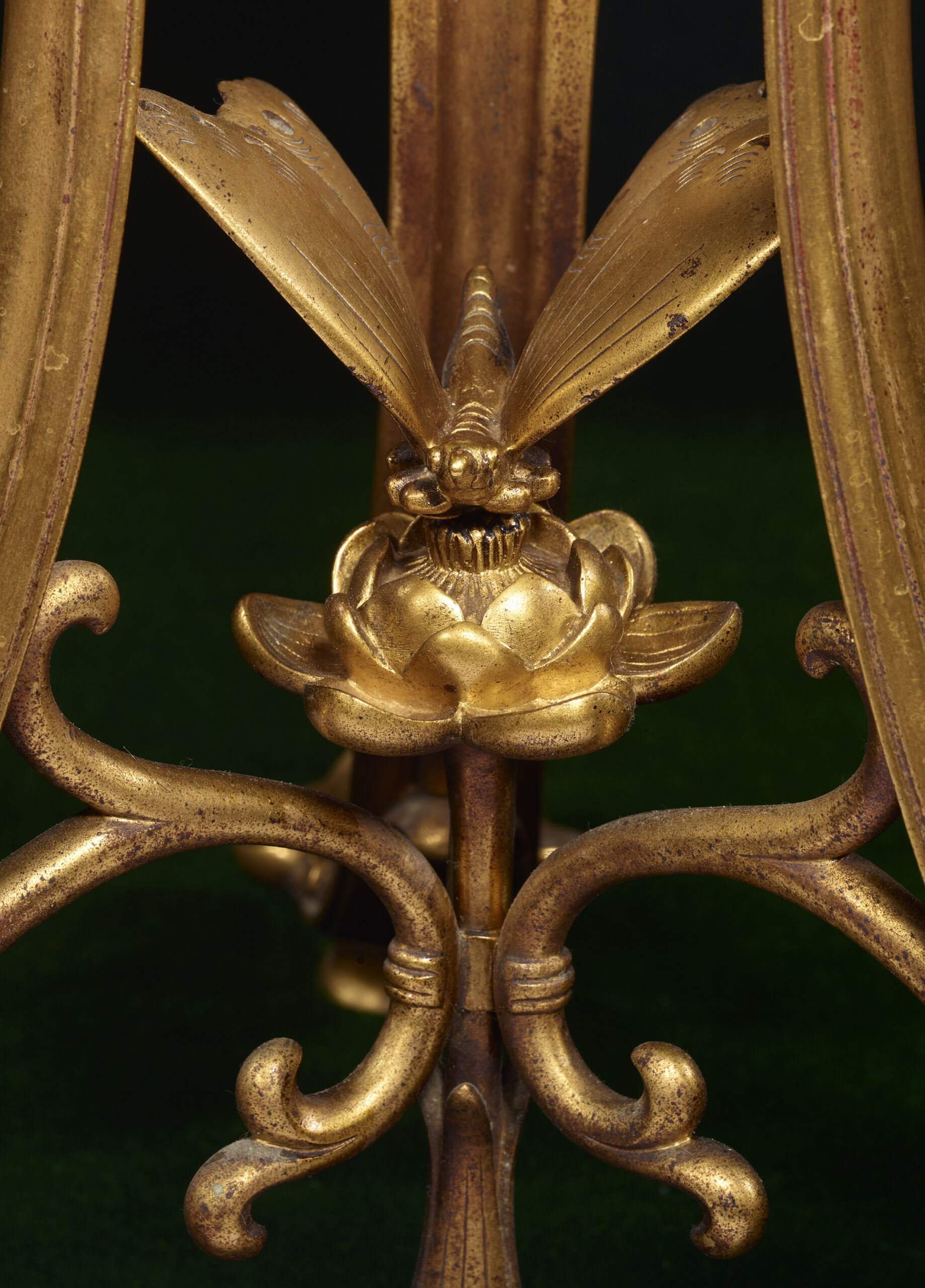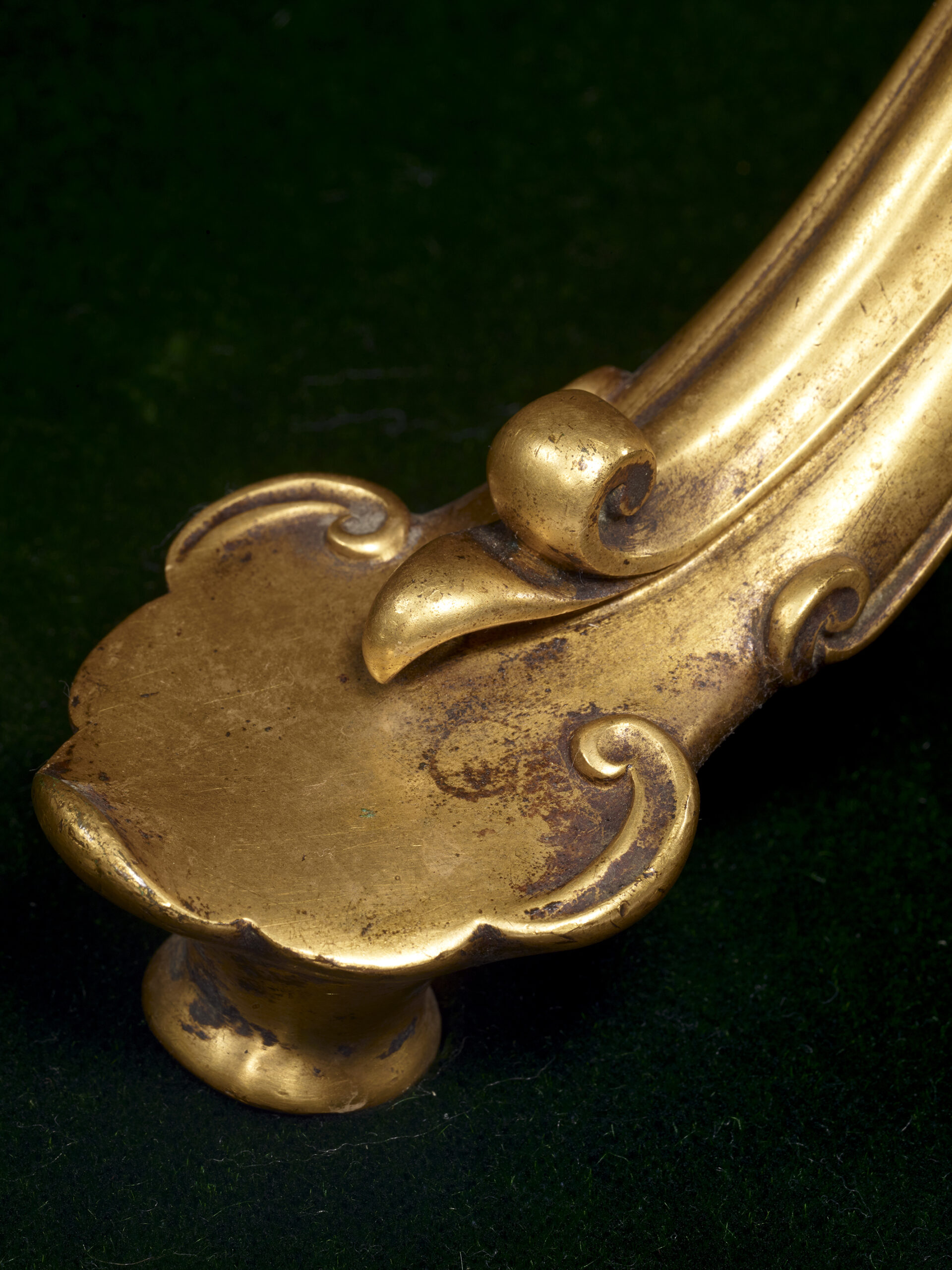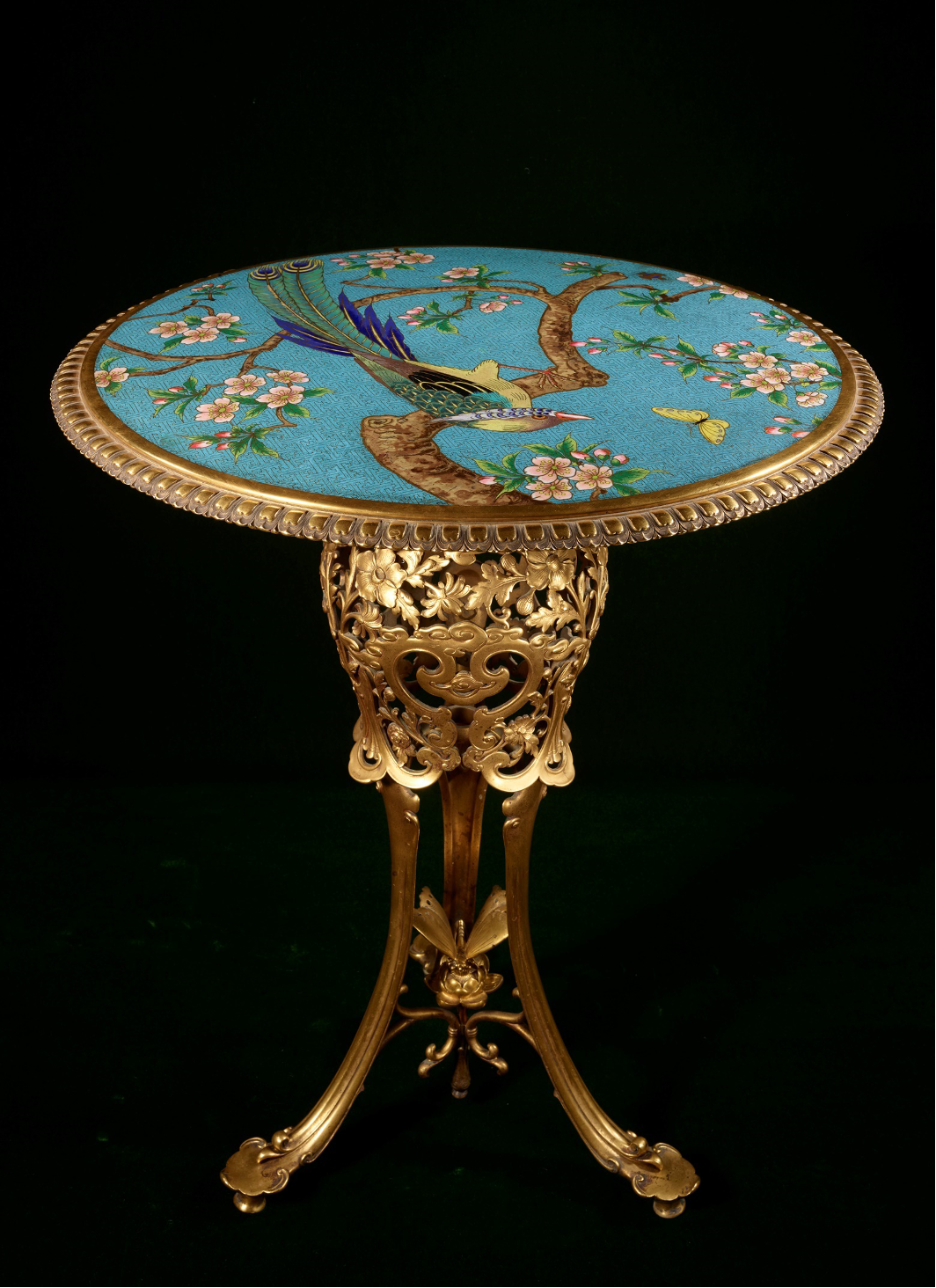

Chiselled and gilt bronze; cloisonné enamels.
H. 71 cm. (28 in.); D. 62.5 cm. (24¾ in.).
MARKS AND INSCRIPTIONS: Signature, date and inventory number visible in a cloisonné cartouche located on the tray, at the end of the branch supporting the bird: 1885/Christofle & Cie/157.
PROVENANCE: collection of Henri Bouilhet (1830-1910), nephew and brother-in-law of Charles Christofle (1805-1863), the founder of the prestigious Maison, manager of the Maison Christofle together with his cousin Paul Christofle (1838-1907), son of Charles; collection of André Bouilhet (1866-1932), son of the former and successor of his father as manager of the Maison Christofle until his death; and subsequently by descent.
EXHIBITION: Exposition universelle de Paris de 1889; Exposition des arts de la femme, organised by the UCAD (Union Centrale des Arts Décoratifs) at the Palais de l’Industrie, Paris, in 1891 ; Le décor de la vie sous le Second Empire, exhibition organised by the Union Centrale des Arts Décoratifs (UCAD) and présented at the Palais du Louvre, Pavillon de Marsan, from 27th May to 10th July, 1922, cat. n°. 566 (lent by Mr. André Bouilhet (1866-1932), manager of the Maison Christofle).
COMPARATIVE LITERATURE: engraving by Henri Toussaint reproduced in the Gazette des Beaux-arts: courrier européen de l’art et de la curiosité, vol. XVIII, 2nd period, Paris, 1st September 1878, p. 227; Anne Forray-Carlier, Le mobilier du château de Chantilly, Dijon, 2010, p. 282-283, cat. n°. 111.
Executed in gilded bronze with a tray in cloisonné enamel, it was created in 1885 and used to illustrate the expertise of the Maison Christofle in this field at the Exposition Universelle of Paris in 1889, then at the Exposition des arts de la femme, organised by the UCAD (Union Centrale des Arts Décoratifs) at the Palais de l’Industrie of Paris in 1891. Designed by Emile Reiber (1826-1883), director of the design workshops at Christofle, perhaps in collaboration with Edouard Lièvre (1828-1886), it displays a luxuriant cloisonné enamel tray with a turquoise blue ground executed by Antoine Tard (a renowned enameller who was active at the Maison Christofle between 1860 and 1889). The tray features a bird reminiscent of a Japanese paradise flycatcher, with rich plumage of predominantly green, yellow and lapis blue tones, resting on the branch of a blossoming plum tree and observing a yellow butterfly flying right in front of it.
The model of this gueridon was created in 1874, with a first example, similar to ours, which was acquired by Henri d’Orléans (1822-1897), Duke of Aumale and fifth and penultimate son of King Louis-Philippe I, between 1874, the date of its creation indicated on its tray, and 1879, the date on which it was mentioned for the first time at the Château de Chantilly, in the Cabinet d’angle (Corner Room) of the Grand Apartement of the Duke. The Duke may have acquired it as early as 1874, on the occasion of the Exposition de l’Union Centrale des Beaux-Arts appliqués à l’Industrie, where the Maison Christofle presented on its stand three gueridons with cloisonné enamel trays, the description of one of which matches our model perfectly. He might also have acquired it in 1878, at the Exposition Universelle that was held that year in Paris, where Christofle presented a gueridon of our model visible in an engraving by Henri Toussaint published in the Gazette des Beaux-arts: courrier européen de l’art et de la curiosité, volume XVIII, 2nd period, Paris, 1st September 1878, p. 227.
A second gueridon of our model, neither that of 1874, already acquired by the Duke of Aumale—unless the Duke had lent it for the exhibition on the express request of Paul Christofle and Henri Bouilhet—nor ours, which was created two years later, adorned the Christofle stand at the 1883 Universal Exhibition in Amsterdam.
Finally, a third gueridon, our own, created in 1885, unless it is only a second example, on the assumption that the one exhibited in Amsterdam in 1883 belonged to the Duke of Aumale, who agreed to lend it on that occasion, successively featured on the Christofle stand at the Paris Universal Exhibition of 1889, then at the Exposition des Arts de la Femme, organised by the UCAD (Union Centrale des Arts Décoratifs) at the Palais de l’Industrie in Paris in 1891.
Regarding the total number of examples produced by the Maison Christofle for the major exhibitions, two hypotheses can be put forward:
1st hypothesis: According to this hypothesis, the “Chantilly” gueridon, acquired between 1874 and 1879 by the Duke of Aumale, was lent to Christofle by the latter to be displayed at the major exhibitions until 1885; from 1885 onwards, it was replaced at exhibitions by our gueridon.
2nd hypothesis: The Chantilly gueridon could no longer have been exhibited from 1879 onwards, or earlier, since it had been sold to the Duc d’Aumale and was precisely mentioned in 1879 as being in the Corner Study of his Grand Apartment in Chantilly. So another piece had to be executed, the one that was to feature at the Amsterdam Universal Exhibition in 1883, i.e. two years before the creation of our gueridon.
Our warmest thanks to Caroline Radenac, Head of Archives and Documentation at the Maison Christofle in Paris, for her help and the valuable archive sources she kindly provided.
